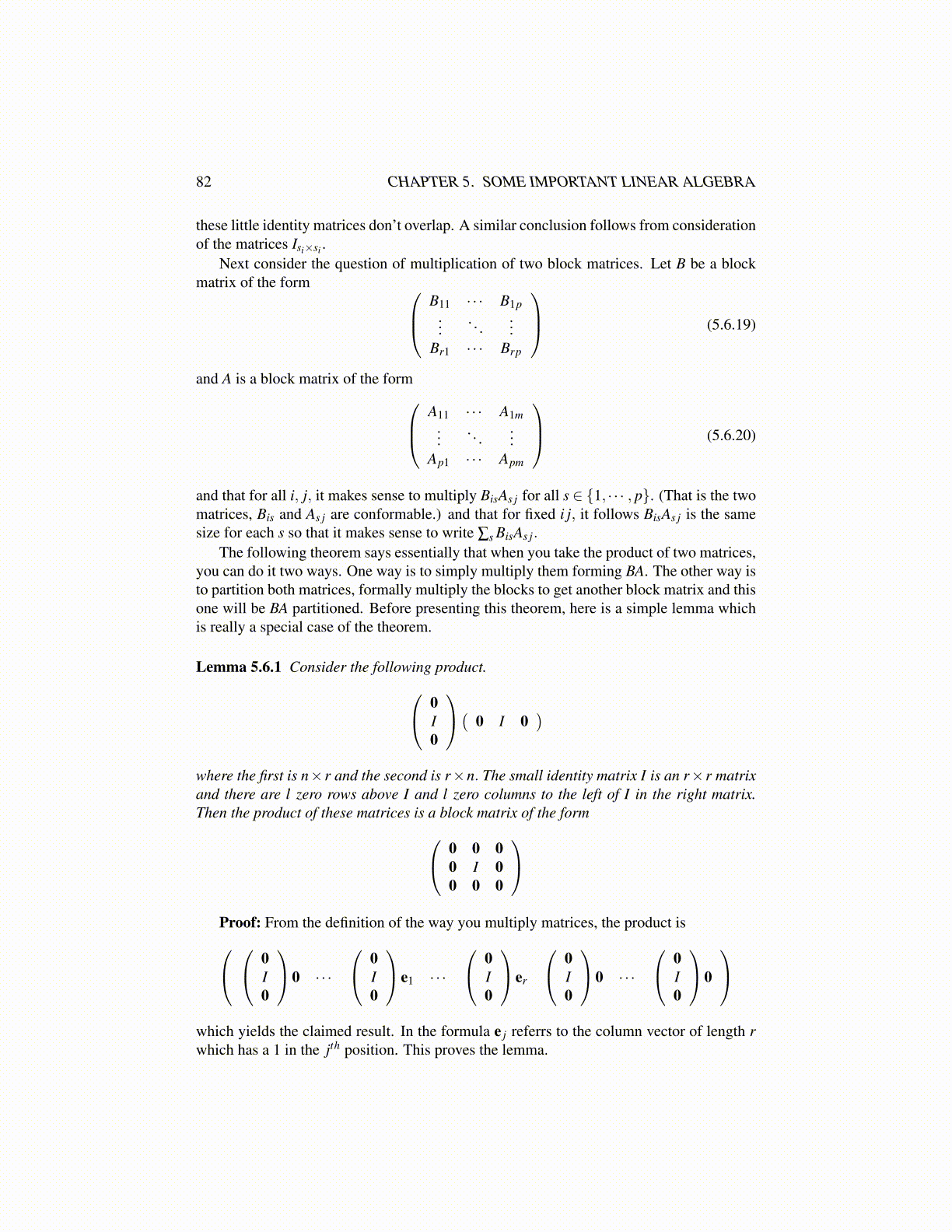
82 CHAPTER 5. SOME IMPORTANT LINEAR ALGEBRA
these little identity matrices don’t overlap. A similar conclusion follows from considerationof the matrices Isi×si .
Next consider the question of multiplication of two block matrices. Let B be a blockmatrix of the form B11 · · · B1p
.... . .
...Br1 · · · Brp
(5.6.19)
and A is a block matrix of the form A11 · · · A1m...
. . ....
Ap1 · · · Apm
(5.6.20)
and that for all i, j, it makes sense to multiply BisAs j for all s ∈ {1, · · · , p}. (That is the twomatrices, Bis and As j are conformable.) and that for fixed i j, it follows BisAs j is the samesize for each s so that it makes sense to write ∑s BisAs j.
The following theorem says essentially that when you take the product of two matrices,you can do it two ways. One way is to simply multiply them forming BA. The other way isto partition both matrices, formally multiply the blocks to get another block matrix and thisone will be BA partitioned. Before presenting this theorem, here is a simple lemma whichis really a special case of the theorem.
Lemma 5.6.1 Consider the following product. 0I0
( 0 I 0)
where the first is n× r and the second is r×n. The small identity matrix I is an r× r matrixand there are l zero rows above I and l zero columns to the left of I in the right matrix.Then the product of these matrices is a block matrix of the form 0 0 0
0 I 00 0 0
Proof: From the definition of the way you multiply matrices, the product is 0
I0
0 · · ·
0I0
e1 · · ·
0I0
er
0I0
0 · · ·
0I0
0
which yields the claimed result. In the formula e j referrs to the column vector of length rwhich has a 1 in the jth position. This proves the lemma.